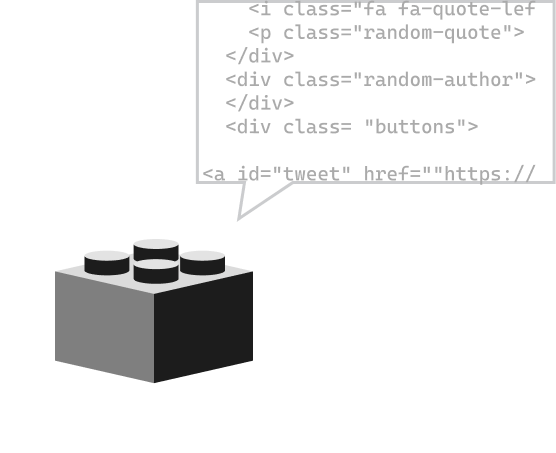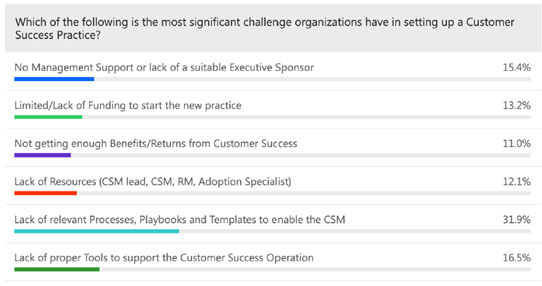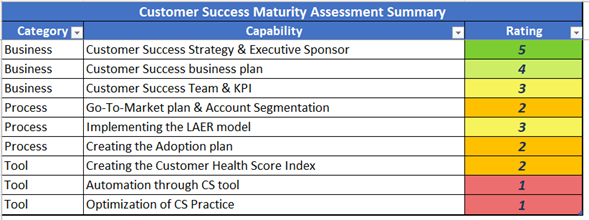You need to assess your customer success practice readiness. Here is why & how.
Jonathan Lee
ISSI Customer Success Practice Lead

Customer Success Practice Blog Series #2
The first blog [1] discussed the "need" for cloud service solution partners to adopt Customer Success as a professional practice. So, what is next? Organizations must know the "starting point" to building the Customer Success practice. This blog explores why it is important to assess the current state of the practice and how you can do it.
First, let's define what a "Customer Success practice" is, an effective practice [2] typically has the following characteristics:
- A defined strategy, executive sponsor, and charter.
- Defines roles for the people Customer Success Manager (CSM) in this case.
- Operational processes, playbooks, templates, and tools
- Go-To-Market plan
- Optimization and growth plans
A common misconception is that hiring the Customer Success Manager means an organization has a Customer Success practice. Many organizations underestimate the complexity involved in setting up a Customer Success practice. This leads to the following common issues:
- The lack of a strategy & plan results in crucial delays in establishing the practice.
- Avoiding the use of industry best practice blueprints extends the learning curve resulting in the need to redo some of the steps.
These common mistakes typically result in missing opportunities and extending the time to market for the practice.
Why Run An Assessment?
In the recent joint ISSI-TSIA webinar held in June [3], the live webinar poll on the significant challenges of setting up the Customer Success practice shows diverse factors. These are shown in the diagram below:

The diverse responses show the gravity and wide-ranging challenges that organizations face as they attempt to set up the Customer Success Practice. These concerns could be the tip of the iceberg; there is no telling what other challenges lies ahead and what you don't know.
The best practice approach recommends that the organization complete an assessment to understand its current state of readiness. This typically covers the skillsets, knowledge, experience, operation, tools, and processes required to establish a successful Customer Success Practice. Without knowing the current state, it is difficult to ascertain the starting point, challenges, and phases needed to ensure the Customer Success practice is operational and effective quickly.
What The Assessment Covers
Relating to the definition of a practice, it will be logical to approach it based on the 3 broad categories of Business, Process, and Tools
Any new practice needs to start with the right business model, supported by a structured process and scale with access to the appropriate tools.

These 3 broad categories breakdown into nine key Customer Success domains. These nine domains are carefully selected as it represents the core building block of a Customer Success Practice. Completing an assessment through a series of discovery sessions facilitated by an experienced consultant identifies the state of an organization's capabilities against the best practice in the industry. Best practice would include references from various OEM vendors, Customer Success tool providers, TSIA, etc. The result of the assessment is a "Heat Map" (sample shown below) that shows the maturity of each domain on a 5-scale model. 1 being the least mature (Initial stage), 3 being the "Defined" stage and 5 being the most mature (Best in class).

The use of a heatmap allows organizations to accurately identify their strengths and weaknesses. When the assessment is completed by an experienced Customer Success professional, it will include recommendations that follow industry best practices. The output from the assessment is used as follows:
- The assessment result shows strengths, gaps, and maturity levels and provides the "Starting point" of the practice building and an action plan that prioritizes the areas for development.
- Enables an objective and quantified justification for further development, prioritization of activities, and budget allocation.
Following the assessment, a series of design workshops are required to enable the organization to create a Customer Success Minimum Viable Model (MVP). The output from these workshops includes a business plan, a process playbook, and tool recommendations. Customer Success touches many processes and professional disciplines within an organization. Stakeholders from each of the processes and professional areas must be engaged in the assessment and design workshops.
Experience has shown that organizations completing a practice assessment and running a series of enablement workshops gain better alignment of resources/processes and reduce the time to create the Customer Success practice from years to months. Shortening the time to market by implementing the business plan, operationalizing the process playbook, and investing in the toolset ensures that the organization's customers rapidly benefit from an effective Customer Success Practice. This, in turn, drives higher customer satisfaction, lower churn, and more opportunities.
To recap
Why you need to assess your Customer Success Practice - ISSI's field experience has shown that organizations that undertake the practice assessment accelerate the creation and progress of the Customer Success Practice.
How do you assess your Customer Success Practice - Having a structured approach with a maturity heatmap provides an easy-to-understand means to identify the strengths, gaps, and next steps.
If you want to learn more about 3rd party services, ISSI has a suite of services, including Customer Success Practice Assessment and Enablement workshops to support organizations in building the Customer Success Practice (https://issi-inc.com/customersuccess/). Feel free to contact us via email at sales@issi-inc.com for further information.
Jonathan WM Lee is the Customer Success Practice Lead. He holds the following certifications - Prosci Certified Change Management, Cisco Customer Success Manager, Microsoft Services Adoption Specialist and has extensive experience of over 100 engagements in training, consulting, and auditing of Customer Success programs, processes, and tools. He is the co-author of the Cisco Advanced Customer Experience Specialization Checklist and Juniper Networks Business Model Transformation Blueprint/Playbook. He has previously spoken in the ISSI-TSIA webinar on "Identifying Strengths & Gaps of your CS Practice." [3]
References
- ISSI Blog "Is now the right time for cloud service solution providers to adopt a Customer Success approach?"
- - Five-phase approach to practice development by Microsoft
- ISSI-TSIA webinar onhttps://www.tsia.com/webinars/identifying-the-strengths-and-gaps-of-your-customer-success-practiceIdentifying Strengths & Gaps of your CS Practice."
Additional Articles
Microsoft's AI Cloud Partner Program: A New Way to Empower Partners
Pablo Marrone, ISSI Senior ConsultantThese start with the most basic - Membership - which is open to all channel partners. From there they progress through partner success; the attainment of “designations” based on partner capability scores; and finally, “specializations” that
Leveraging the Power of the Well-Architected Framework
Barry Turner, Senior Consultant, ISSIThis blog will provide an overview of the Well-Architected Framework (WAF), the benefits it delivers, and how to start using it. I will also briefly discuss the role of the WAF in conjunction with the Cloud Adoption Framework.
Cloud management platforms: a core component in growing your managed services business
Amarnath Gutta, Senior Consultant, ISSICloud Management Platforms: A Core Component in Growing Your Managed Services Business By Amarnath Gutta, Senior Consultant, ISSI In our work with partners through workshops,
- 18 DEC 2022
ISSI’s Burjor Mehta recognized by Publisher SiliconIndia
ISSI’s Burjor Mehta Recognized by Publisher SiliconIndia Click here to read the full article SiliconIndia has Placed ISSI CEO Burjor Mehta in their 100 Most
04 DEC 2024Leveraging the Power of the Well-Architected Framework
Barry Turner, Senior Consultant, ISSIThis blog will provide an overview of the Well-Architected Framework (WAF), the benefits it delivers, and how to start using it. I will also briefly discuss the role of the WAF in conjunction with the Cloud Adoption Framework.
06 JAN 2025ISSI AI Audits
Jamie Thordsen, Director of Partner Programs, ISSIOver the past two years the cloud industry has experienced a revolution in artificial intelligence as features and functionality such as generative AI spur enormous innovation and opportunities. ISSI has followed a parallel trajectory with our artificial intelligence domain expertise and offerings.
